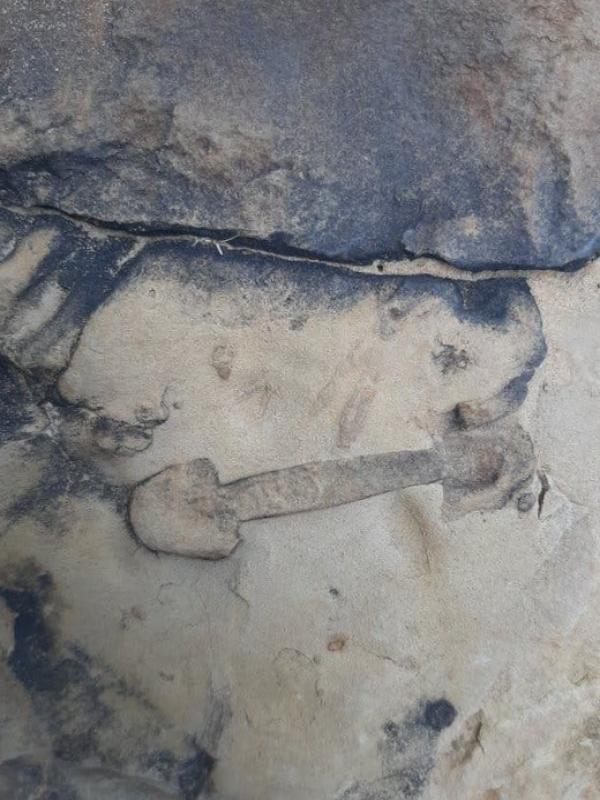Science
The origin of Bifungites fossils is a mystery despite being discovered worldwide
Scientists in Brazil identified marine worms that made at least some trace fossil burrows called Bifungites.
Updated 2024-Aug-24 12:00

A dumbbell-shaped fossil burrow rises from a piece of gray and tan stone.
The scientists believe that the Annulitubus worms created these tunnels as a defense mechanism against harsh weather and predators.
The worms might have inserted themselves into the strange protruding or pointed ends of the chamber.
Sedorko mentioned that the animal was attempting to be repaired. It s only a hypothesis. However how were the fossilized worms able to stay preserved in these burrows over millions of years?Dr.
Sedorko stated that the area encountered regular storms with each one leaving behind multiple feet of sediment that would rapidly cover the worms.
Over time their bodies decomposed while their imprints stayed intact in the mud. Sedorko commented on the beauty of the worm impressions.
The team aims for their discovery to inspire ichnologists worldwide to remain vigilant for creators of these fossilized burrows.
Although the researchers are certain that ancient Annulitubus worms created the Bifungites in the area of Brazil they examined they are not discounting the possibility of arthropods being responsible for similar burrows in other parts of the globe.
If you know where to look you can find dumbbell shaped fossils in rock outcrops all over the world: in Brazil the United States Canada India and African and European countries.
They are called Bifungites and they are not fossilized animals but burrows left in an extinct creature’s wake.
Most are found in rocks from the Paleozoic era more than 300 million years ago. No one knows what made these Bifungites burrows which are considered trace fossils although scientists have hypothesized what they might have been.
Daniel Sedorko an invertebrate paleontologist at Brazil’s National Museum has studied them for more than a decade and during an expedition in June 2022 he noticed something unusual.
The burrows are typically empty because the creatures that constructed them were soft bodied invertebrates that often don’t fossilize well.
On exposed rocks in the bed of the Sambito River in northeastern Brazil Dr. Sedorko saw an imprint of a small worm inside one Bifungites.
Within hours his team found seven other fossilized burrows with the same worm imprint indicating that these organisms produced them.
The researchers believe it’s the first record revealing the invertebrates that made these Bifungites.
They announced their discovery in the September issue of the journal Earth History and Biodiversity.
Discovering these animal preservation sites however is always a matter of chance according to Dr.
It s similar to hitting the jackpot. Carlos Neto de Carvalho a specialist in ichnology at the University of Lisbon who was not part of the research described the discovery as thrilling.
He stated This is the most compelling evidence in the trace fossil record for determining the creator.
Highlighting how uncommon the discovery is Dr. De Carvalho mentioned that it is more likely to come across a new dinosaur species than a source of a trace fossil.
The imprints uncovered by Dr. Sedorko and his team indicate that the marine worms responsible for Bifungites were part of a group known as Annulitubus.
The species of this group resided in the shallow area of the sea.
